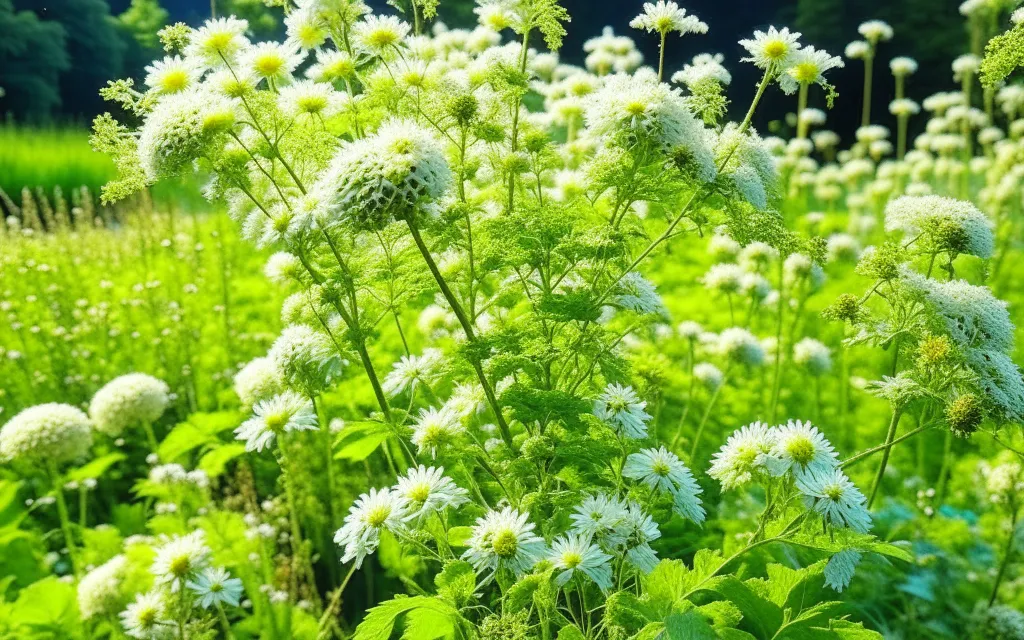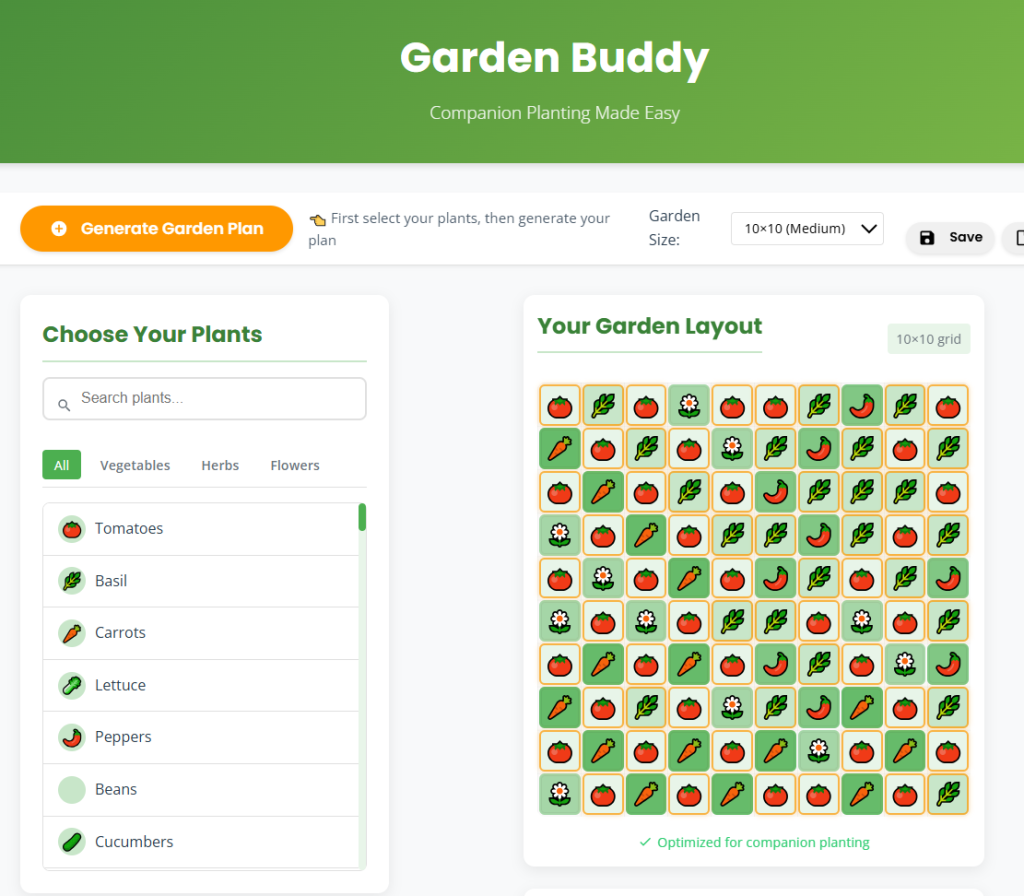
Growing Meadowsweet: A Gardener’s Delight
Hey there, fellow garden enthusiast! Today, I’m excited to talk about one of my favorite perennial plants—Meadowsweet. If you haven’t come across it yet, you’re in for a treat. This stunning plant is not just pretty; it’s also packed with history and a myriad of growing possibilities. Let’s dive into the wonderful world of Meadowsweet, shall we?
What is Meadowsweet?
Meadowsweet (Filipendula ulmaria) is a robust perennial that thrives in damp, fertile soil. It’s often found in meadows, hence the name. This beauty can grow up to 3 feet tall, boasting fluffy, creamy-white flowers that give off a sweet fragrance, making it a favorite for bees and other pollinators. What’s more, it prefers partial shade but can also handle the full sun if given enough moisture—just the kind of versatility that I absolutely adore!
A Brief History
Historically, Meadowsweet has been used for centuries in herbal medicines. The ancient Greeks utilized it for its medicinal properties, especially for aches and pains. It’s believed that the name “Meadowsweet” comes from its sweet aroma, reminiscent of honey, which also made it an ingredient in mead—a favorite drink among early civilizations. I love knowing that when I cultivate this plant, I’m connecting with a rich tapestry of history!
Growing Meadowsweet: Methods and Variants
As a gardener, I can’t stress enough how adaptable Meadowsweet can be. You can grow it vertically using trellis structures, which can help save space and add visual interest to your garden. Alternatively, if you have ample ground space, it’s just as stunning when allowed to spread out naturally.
There are several variants of Meadowsweet, including the traditional Filipendula ulmaria, but consider trying out the ‘Variegata’ version, which features beautiful cream and green-leafed variegation that can brighten up any garden bed. Oh, and the ‘Rosea’ variety brings an enchanting pink hue to your garden, making it perfect for those who crave a pop of color!
The Benefits of Companion Planting for Meadowsweet
You might be wondering, “What are the benefits of companion planting for Meadowsweet?” Well, let me tell you, companion planting offers a treasure trove of advantages. It can improve soil health, deter pests, attract beneficial insects, and provide shade or support.
What are Good Companion Plants for Meadowsweet?
If you’re looking to create a thriving garden, you can’t overlook the power of pairing Meadowsweet with complementary plants. Here are some excellent companions that will enhance your garden’s ecosystem:
Fruit Trees
Berries
Plants to Avoid? Not Really!
Interestingly enough, there aren’t specific plants that you need to avoid when growing Meadowsweet. It’s wonderfully versatile and generally plays well with others in the garden! However, I’ve always found it beneficial to maintain a reasonable distance from robust plants that might overshadow it, ideally around 2 to 3 feet away. This keeps Meadowsweet from being overwhelmed and allows it to flourish in its own right!
Bringing it All Together
Meadowsweet not only beautifies our gardens but serves as a fantastic companion to many fruit trees and berries. With the right companions, you’ll not only enhance the overall health of your garden but also create a visually stunning environment. So, whether you’re planting it vertically or letting it sprawl, I hope you take a shot at growing Meadowsweet in your own backyard! Happy gardening!
Companion Planting with Meadowsweet: Spacing Guidelines
When I first started my gardening journey, I was taken aback by how much there is to learn about companion planting. It’s a delightful concept that not only enhances plant health but also boosts overall yield. Today, I want to share what I’ve discovered about spacing recommendations for companion plants to Meadowsweet. Trust me, your garden will thank you for this knowledge!
General Spacing Rule for Fruit Trees
For most fruit trees, a good rule of thumb is to space them 10 to 20 feet apart. This distance allows for healthy growth, air circulation, and prevents overcrowding. If you’re planting something like apple trees or pear trees near Meadowsweet, aim for that sweet spot in between.
Berries
When it comes to berries, I like to keep them about 3 to 5 feet apart. They thrive on companionship and will thank you for giving them room! For instance, strawberries and blueberries love to hang out with Meadowsweet.
Tall Companions
If you’ve got tall plants, such as sunflowers or sweet corn, give them some breathing space. I’d recommend around 3 to 5 feet between the base of these plants and Meadowsweet. This distance helps ensure sunlight reaches all the plants without one overshadowing the other.
Low-Growing Companions
Low-growing companions, like thyme or creeping phlox, can be spaced just about 1 to 2 feet from Meadowsweet. They won’t compete for vertical space but will complement each other beautifully, creating a lush garden floor.
Strongly Aromatic Companions
For those fragrant herbs like basil or mint, space them around 2 to 3 feet away from Meadowsweet. The aroma from these companions can deter pests and enhance the flavor of the surrounding plants—definitely a win-win!
Nutrient-Heavy Feeders
Nutrient-hungry plants, such as tomatoes and squash, prefer spacing of about 2 to 3 feet from Meadowsweet. I’ve found that they thrive when they have a bit of elbow room to absorb nutrients without competing too fiercely.
Spreading or Vining Companions
With spreading or vining companions like squash or cucumbers, I like to give them about 3 to 4 feet of space. These plants love to sprawl, and this distance allows Meadowsweet to flourish alongside them without getting smothered.
One important tip: Always adjust these recommendations based on your specific garden conditions and the mature sizes of your chosen companion plants! Every garden’s ecosystem is unique, and a little trial and error may help you find the sweet spots for your plants.
Summary of Companion Planting with Meadowsweet
Fruit Trees
Fruit trees like apples and pears thrive when planted around 10-20 feet apart from Meadowsweet. They do well with companions like:
Berries
Berries such as blueberries and strawberries can be spaced 3-5 feet apart from Meadowsweet. They can also be partnered with:
Combining these plants with Meadowsweet not only provides a bountiful harvest but also creates a stunning landscape. Happy planting, and may your garden thrive!

Leave a Reply